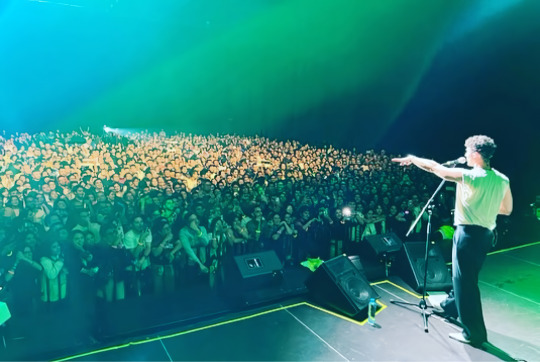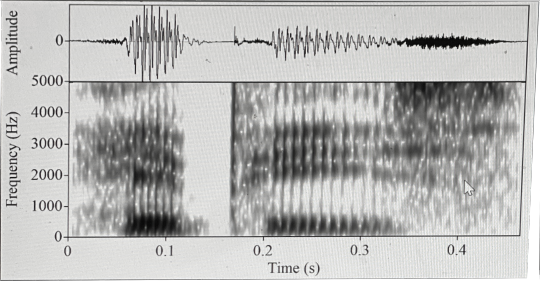#will gramling
Text



Via Aby Alvear's Instagram Story (July 26, 27th, 2023)
#darren criss#fans#darren criss @ frontón méxico#tomek miernowski#ben rose#will gramling#chris lorenz#dylan saunders#joey richter#lauren lopez#instagram#video#july 2023
51 notes
·
View notes
Text










darrencriss my dear 🇲🇽 you never cease to traer el fuego! muchas gracias a todos mis amigos! the show was totalmente chido 🤘😎
thank you @ocesa@frontonmexico for bringing me back to CDMX❕
#darren criss#chris lorentz#dylan saunders#joey richter#lauren lopez#will gramling#tomek miernowski#ben rose#fronton mexico#darren instagram#me edits
14 notes
·
View notes
Text






darrencriss: my dear 🇲🇽 you never cease to traer el fuego! muchas gracias a todos mis amigos! the show was totalmente chido 🤘😎
thank you OCESA - Frontón México for bringing me back to CDMX❕
📸 pro shots : Liliana Estrada
📱bro shots : Dylan Saunders, Ricky Rollins
#darren criss#starkid#joey richter#dylan saunders#lauren lopez#ricky rollins#tomek miernowski#chris lorenz#ben rose#will gramling#darren criss @ frontón méxico#darren criss @ frontón méxico bts#by liliana estrada#🇲🇽#dailymenedit#malestarsedit#dailymalesource#dailymen#mensource#dailymusicians#dailymusic#musicsourcedaily#musiciansedit#popculturesource#hands✋#arms💪#tanktop#simi warbler 🥺#please do not repost
11 notes
·
View notes
Text
solve a gramle with me!
a couple weeks ago i finished my linguistics minor and i thought i'd do a very different kind of post and walk you guys through decoding a spectrogram! (mistakes and all)
northern arizona university created their own version of wordle for linguists, called 'gramle,' which gives the player a spectrogram and they have to guess the word being said.
the player types in IPA symbols (which will appear in this post and you can listen to here). they are then told if the sound is wrong, right but in the wrong place, or fully right.
here's a relatively easy one that i solved in 3 guesses:

(unfortunately, i didn't take a screenshot so you'll have to ignore the photo quality and the cursor on the screen. oops!)
for those unfamiliar with spectrograms, this looks pretty unintelligible. spectrograms are a graph of frequency over time, with intensity (or amplitude) of the waves shown via shading. to understand why they're helpful, we need to understand how air moves through your vocal tract:
the airwaves in your vocal tract are composed of many different frequencies of waves, all bouncing around. air moves through your vocal tract and hits different parts depending on the shape. different frequencies of waves are then amplified or dampened by the shape your mouth was in. the frequencies of waves that get amplified the most form dark bars of intensity called "formants." these formants can then give us clues about what shape the mouth was in when the speech sound was made!
in the picture above, we can see several different patterns of darkness and lightness. those are different sounds. in gramle, we are looking for 5 different sounds.
my first step is to identify the borders of the sounds

now that we have the boundaries between the sounds, we are going to try to identify the type of sound they are, aka their 'manner of articulation' (HOW the sounds are made).

here's what we can tell:
this word looks like it has two vowels in it, separated by a period of blankness. this means it will be two syllables.
the period of blankness is clearly a stop
the sound at the end is clearly a fricative
the sound at the beginning is also a fricative, but i guessed that it was an approximant first. (this was silly of me, and we'll get into why in a little bit)
now that we know HOW the sounds are made, we can look for clues about WHERE they're made (place of articulation):

again, here's what we can tell:
both vowels have a big distance between their first and second formant. F1 is low while F2 is high. this means they are high, front vowels. probably they are /i/ or /ɪ/
the formants on either side of the stop are bending downwards. this tells us the sound is probably bilabial, meaning it's produced with two lips. it's probably /p/ or /b/
there is also a completely blank period, meaning there's no voicing bar. (voicing is the vibration of the vocal folds and it shows up as a little bit of low-frequency noise). therefore, we can make an educated guess that the sound is /p/
the fricative has a ton of noise really high in frequency. this means it's a sibilant, a class of s-like sounds that make hissing noises. alveolar sibilants, /s/ and /z/, have higher pitched hissing than their postalveolar counterparts, /ʃ/ and/ʒ/.
(we're ignoring the first sound for now)
here's what i guessed:

(this is the word "lapis")
let's break this down:
because i could not think of a word that used vowel /i/, i went with /æ/ even though i knew it was wrong. this is still a game of wordle after all!
/ɪ/ was correct, but not in the right spot, which means the first vowel must be /ɪ/. because the second vowel is not /ɪ/, it must be /i/
/p/ was correct. yay!
/s/ was not right, which bummed me. I was pretty sure it was an alveolar fricative, but I didn't see a voicing bar. my two strategies were to change my assumptions about place and vocing, changing my guess to either /ʃ/ (voiceless post-alveolar), or /z/ (voiced alveolar)
I thought that the first sound was an approximant because the sound waves seemed more organized than they are for the final sound. approximants are made by resitrcitng airflow, but not so tighly and it does not become nearly as turbulent as the air does in a fricative. I tried /l/ without much strong place evidence.
with some new thoughts, it was time for my second guess. this time, i do not aim for a real word but instead throw some sounds on there to test them.

(this is not a real word, but if it were, it would be spelled ripiche)
we got the vowels confirmed!
/ʃ/ was not the ending. i guessed this because i thought there wasn't a voicing bar, but that can be tricky. a more experienced spectrogram reader would probably guess /z/ before /ʃ/, because the place evidence was stronger than the voicing evidence. but hey, i'm still learning :)
again, i try an approximant. i did not want to pick /w/ as that would create the same labial bend we saw for /p/, and /ɹ/ keeps F1 and F2 relatively in the same spot. the problem here is that it bends F3 a lot, and so I knew it wasn't quite right either. noticing that the sound is actually quite quiet by looking on the waveform, i realize that it's probably a fricative. the absence of a voicing bar also points to a fricative, as English approximants are voiced by default
now i can try again for a real guess:

(the word is "hippies")
i tried /z/ at the end this time and it was correct!
there was not a lot of evidence for the place of the fricative, so once i knew all the other sounds, i tried to see which sound would make a real english word. my best option was /h/, as 'fippies' and 'thipies' aren't words.
/h/ is produced in the glottis, which is the opening in your larynx. there is hardly any constriction when /h/ is made and it's place as a fricative is sometimes debated. because of this, it make sense that there weren't any strong place cues.
and with that we solved the gramle!
i hope to grow better at these and maybe be able to walk you all through a harder one! thank you for reading :)
#linguistics#gramle#kade speaks#undescribed#this was very fun to write#i don't often do these kinds of posts so i hope you like it!#if anyone has questions about spectrograms lmk!
37 notes
·
View notes
Text
my partner introduced me to this and its very so so scary ; https://nascl.rc.nau.edu/gramle/
Gramle 288 4/5
🟩⬛⬛⬛⬛
🟩🟩⬛⬛🟨
🟩🟩🟨🟩⬛
🟩🟩🟩🟩🟩
5 notes
·
View notes
Text

Gramling
6 notes
·
View notes
Text
'i love you. but that's not enough to save you.' @cstarling
her love is not anything that will can understand. he'll TAKE it, greedily, jumping at the chance to sink the teeth of his desire into something sweet and feel the taste of affection dribbling down his chin. but it's always been this way, and it always WOULD be. they understand each other far too well and yet still, not at all. stubbornly, she clings to this belief that he is something that he is not, something that he has not interest in becoming once again. will was a wolf in sheep's clothing and on a cliff side, the seams finally came unraveled. there was no sense in piecing it back together.
AND YET. she remains. she loves. they are sat in his home and will's anger lashed out again. once leashed and collared in his mind, it has proven impossible to fully tame it since that singular night. near her, it is a different beast, but a beast nonetheless. she is the only good thing in his life and he has no thoughts of hurting her, at least not any more. but movement from the corner of his eye will still make his jaw snap. "saving me would require a THREAT." and his tone alone completes the thought: if there is a threat here, it is him. if there is a threat, he has BECOME it— not created it, but revealed it in his own nature.
perhaps, more to the point, in a language she may be able to decipher: "to save me, i'd have to want to be saved." the taste of their dinner sours in his mouth alongside these words. he drops a hand to his gut in an act that clarice will recognize by now. he LOVES her. but moments like these are such a stark reminder that she cannot see him. a few years ago and this simple life with her would have been a fantasy. but having been seen, knowing the feel of it, the glory, the holiness—...

will thinks of his scars. will feels nausea rise in his throat. will's eyes can't focus on anything, shifting from side to side in an attempt to find something definitively not here, seeing only absence where he looks. a moment passes and then, hurt and earnest, he finally looks at her. "i hope for both of our sakes that you'll outgrow this fucking complex."
1 note
·
View note
Text
I've started attempting gramles after I saw @shoesofthefishermanswife posting about them in the linguistics tag and while I enjoy deploying my (limited) phonetics skills, the American English definitely throws me, especially when it comes to the vowels. Just picture me going "Ra, Ra" imaging I'm American and you'll have a hint of what my housemates have been going through...
1 note
·
View note
Text

Lokiceratops rangiformis was a ceratopsian dinosaur that lived during the Late Cretaceous (~78 million years ago) in what is now Montana, USA. Estimated at about 6.7m long (~22ft), it was one of the largest known members of the centrosaurine branch of the ceratopsians.
It had a unique arrangement of ornamentation on its skull, with no nose horn, two long brow horns, and a pair of huge asymmetrical curving blade-like spikes on the top of its square frill – some of the largest known frill spikes of any ceratopsian.
It lived in a swampy environment near the shore of the Western Interior Seaway, in an area that seems to have had an unusually high diversity of ceratopsians – along with Lokiceratops there were three other centrosaurines (Medusaceratops, Albertaceratops, and Wendiceratops), and one chasmosaurine (Judiceratops).
(There's also a possibility that it might not actually be a unique species. We know some other ceratopsians' faces changed quite drastically as they aged, so Lokiceratops could instead represent a fully mature individual of Medusaceratops.)
———
NixIllustration.com | Tumblr | Patreon
References:
Gramling, Carolyn. "Meet Lokiceratops, a newly discovered species of horned dinosaur." Science News, 20 June 2024, https://www.sciencenews.org/article/lokiceratops-new-species-horned-dinosaur
Loewen, Mark A., et al. "Lokiceratops rangiformis gen. et sp. nov.(Ceratopsidae: Centrosaurinae) from the Campanian Judith River Formation of Montana reveals rapid regional radiations and extreme endemism within centrosaurine dinosaurs." PeerJ 12 (2024): e17224. https://doi.org/10.7717/peerj.17224
Molinek, Rudy. “Dinosaur with Giant, Loki-like Horns Has the ‘craziest, Coolest’ Headgear-and Could Be a New Species.” Smithsonian Magazine, 20 June 2024, https://www.smithsonianmag.com/smart-news/dinosaur-with-giant-loki-like-horns-has-the-craziest-coolest-headgear-and-could-be-a-new-species-180984577/
Wikipedia contributors. “Lokiceratops.” Wikipedia, 1 Jul. 2024, https://en.wikipedia.org/wiki/Lokiceratops
#science illustration#paleontology#paleoart#palaeoblr#lokiceratops#centrosaurinae#ceratopsidae#ceratopsian#marginocephalia#ornithischia#dinosaur#art
346 notes
·
View notes
Text
Slyšte!
Svihlit! Gramle! Praskavka! Rarášek! Bazmek! Naxos! Žranice! Žába! Stříhání! Velden!
Hledám velmi niche komunitu lidí a vím, že většině z vás to zní jako slova černé magie, ale aspoň jeden člověk tady si bude myslet, že jsem funny
27 notes
·
View notes
Text

NASA to develop lunar time standard for exploration initiatives
NASA will coordinate with U.S. government stakeholders, partners, and international standards organizations to establish a Coordinated Lunar Time (LTC) following a policy directive from the White House in April. The agency's Space Communication and Navigation (SCaN) program is leading efforts on creating a coordinated time, which will enable a future lunar ecosystem that could be scalable to other locations in our solar system.
The lunar time will be determined by a weighted average of atomic clocks at the moon, similar to how scientists calculate Earth's globally recognized Coordinated Universal Time (UTC). Exactly where at the moon is still to be determined, since current analysis indicates that atomic clocks placed at the moon's surface will appear to 'tick' faster by microseconds per day. A microsecond is one millionth of a second. NASA and its partners are currently researching which mathematical models will be best for establishing a lunar time.
To put these numbers into perspective, a hummingbird's wings flap about 50 times per second. Each flap is about .02 seconds, or 20,000 microseconds. So, while 56 microseconds may seem miniscule, when discussing distances in space, tiny bits of time add up.
"For something traveling at the speed of light, 56 microseconds is enough time to travel the distance of approximately 168 football fields," said Cheryl Gramling, lead on lunar position, navigation, timing, and standards at NASA Headquarters in Washington.
"If someone is orbiting the moon, an observer on Earth who isn't compensating for the effects of relativity over a day would think that the orbiting astronaut is approximately 168 football fields away from where the astronaut really is."
As the agency's Artemis campaign prepares to establish a sustained presence on and around the moon, NASA's SCaN team will establish a time standard at the moon to ensure the critical time difference does not affect the safety of future explorers. The approach to time systems will also be scalable for Mars and other celestial bodies throughout our solar system, enabling long-duration exploration.
"As the commercial space industry grows and more nations are active at the moon, there is a greater need for time standardization. A shared definition of time is an important part of safe, resilient, and sustainable operations," said Dr. Ben Ashman, navigation lead for lunar relay development, part of NASA's SCaN program.
6 notes
·
View notes
Text
Get in [linguists], we're doing WORDLE

[singing "Somewhere" from West Side Story, replacing the word "place" with "wordle"]
Get your gramle on here.
6 notes
·
View notes
Text
The combination of escape, self-encryption, self-stylisation, salutary neglect and clandestine discovery that other languages tantalisingly offer – and that often propels a queer person at a young age to learn a foreign language and accent well, when their classmates may be content to recline in the native languages and tones bequeathed to them – is the same admixture that often evolves into a potent queer translingual imagination (Kellman 2000) and a translational cultural politics in adulthood.
...
These are questions for literary translators, because queer scenes in literary texts can switch from apparently muted and unnuanced language in one moment to a set of words or phrases in another moment that is absolutely contingent – legally, discursively and transactionally –on the stylistic and symbolic granularity of having chosen one word over another. A certain word choice will land one either in jail or in a certain erotic scenario (or both), whereas a syntactically identical, semantically almost indistinguishable word will allow one to maintain plausible deniability and ensure that no untoward encounter will have taken place. Queer translation must thus be in the business of painstakingly translating implicature, rudimentariness, inchoateness, aborted attempts at articulation, and discursive fragmentation to a degree that is often utterly foreign to other spheres of translating.
David Gramling, Queer/LGBT Approaches, The Routledge Handbook of Literary Translation
2 notes
·
View notes
Text

Gramling
4 notes
·
View notes
Text
0 notes
Text









PREDATOR ISLAND (2005) dir. Chuck Gramling
#if these gifs look like shit I promise you I tried my best. the movie just looks like that#also I don't have any of that adobe stuff the pros use#just clipchamp and a dream#anyways. you should watch this movie it sucks so bad#predator island 2005
0 notes